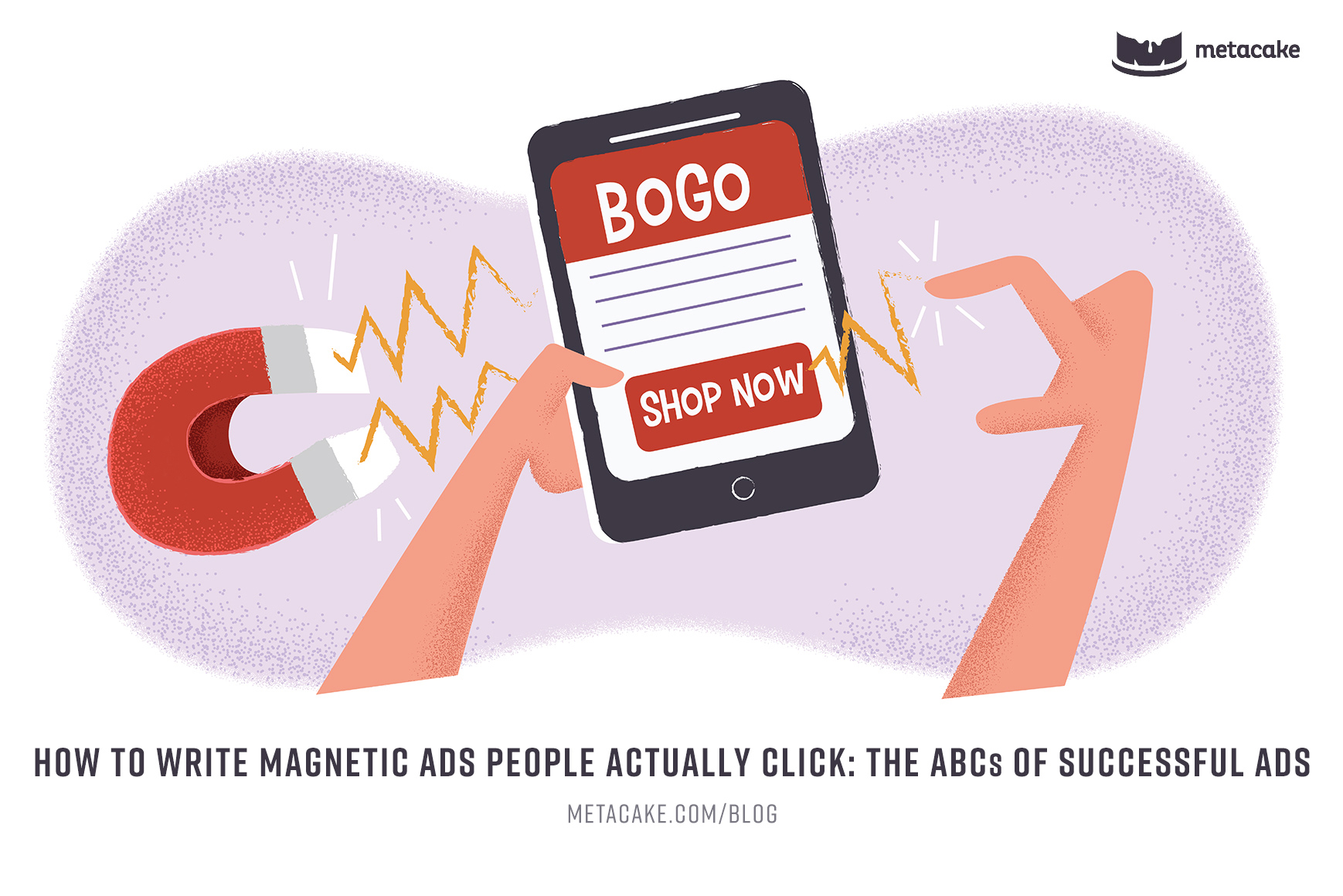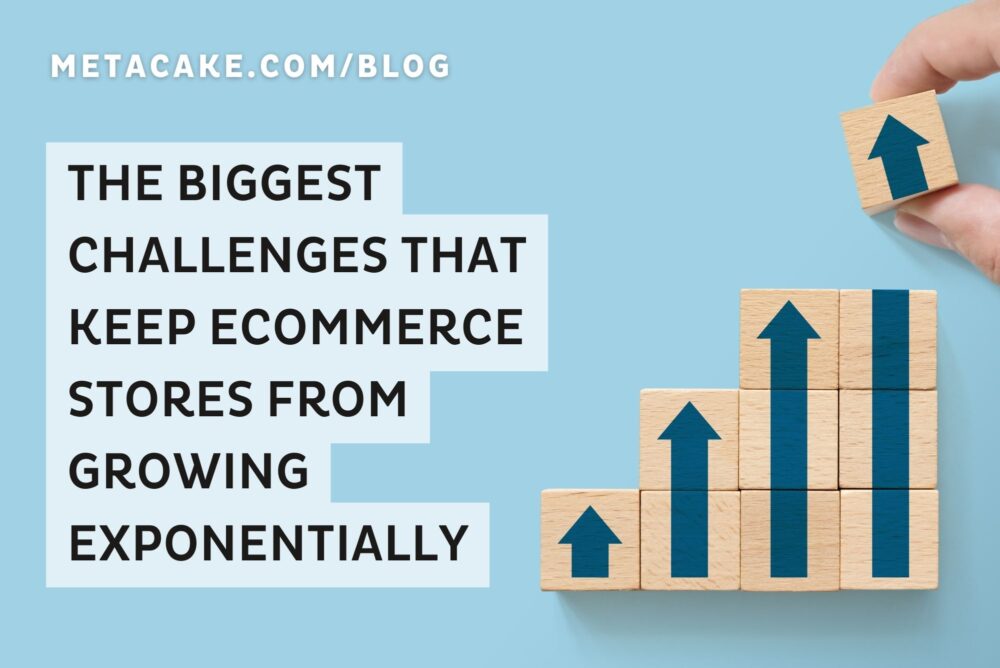
How to Write Magnetic Ads People Actually Click: The ABCs of Successful Ads (Formerly 3 T’s)
Updated: January 27, 2021
Is digital advertising dead? Are the ads too expensive, the noise too great, and the competition for people’s attention too fierce? Is the ad-pocalypse upon us?
As marketers and ecommerce brands who rely on digital marketing for customer acquisition, are we doomed? Will we have to go back to radio, TV, and billboards?
If you’ve been in the digital marketing scene for a while, you are aware of the changing landscape and the fear that ad channels like Facebook and Instagram are no longer producing the results they once were. We actually began discussing this in-depth in 2019, here. This year, the conversation has shifted to the battle between Apple and Facebook for user data and significant algorithm changes as a result. What’s a marketer to do?
Here’s the thing: This isn’t the first time this has happened. Over the years, inevitable ebbs and flows have happened with every medium, from newspapers and magazines to radio and TV. It’s inevitable as technology and trends move forward.
Whatever comes our way, it’s important for advertisers to remember that marketing always has two parts: the platform and the message.
In contrast, the constant— the element you can control— is your message. And if you’re using the right message for the right audience, you’re on your way to winning.
The purpose of today’s post is to help you with what you can control: your message. We’re sharing our simple, winning formula for writing effective, action-oriented ads. This is approachable and applicable for any brand of any size on any ad platform
The ABCs of Action-Oriented Ads
Whether you’re writing an ad for Facebook, Instagram, or Google, or even a script for a YouTube video, you can apply the ABCs of Action-Oriented Ads. Try to develop your ad’s core message using these pillars independent of any ad platform, and then you can tailor them for different channels later.
The 3 pillars are:
- Audience
- oBjective
- Copy
Yes, you can roll your eyes at the “oBjective” standing for the letter B (if you come up with a better acronym, feel free to email our team to let us know). In the meantime, let’s break each of these down to help get your click-worthy ads flowing!
1. Audience
First, create a persona (or several different personas) for the ideal customer you are speaking to. As a starting place, you can list what you know about each customer’s demographic information such as age, gender, profession, income, location, etc. However, diving into their interests is even more important, including what affinities they have, what brands they purchase, what activities they enjoy, etc. These interests will guide your targeting as you set up campaigns, especially on ad platforms like Facebook.
Going even deeper and thinking about core desires and fears will be very helpful for actually writing ad copy. What frustrations exist in their day-to-day life that your product can help solve? What areas of their life need a boost of confidence that your product can supply? If you find you can’t answer these questions about your ideal customer, running a focus group is a very useful tool to dive into this further.
Most brands have at least a few different types of people they are selling to. If that’s you, create multiple personas and give each a face and a name to help keep track of them. With those unique customers in mind, be sure to write ads that are tailored for their interests, needs, etc. This does create extra work, but it’s necessary work. Different personas will care more about different features and benefits of your product. For example, if your product appeals to both a busy mom and a college athlete, you will want to “hook” each audience with slightly different ad copy.
2. oBjective
Secondly, the objective identifies what you want the user to do— what type of action is your ad asking the user to take?
Your first response is likely “make a purchase”, but unfortunately that’s a big ask and is not likely to win over cold traffic in a crowded landscape. Instead of asking everyone to make a purchase, consider pushing for micro-actions that move the user down your funnel from cold traffic to a warm lead, all the way to making a purchase.
Think about your ad funnel and where this message or ad will be placed in the customer journey (if you need a refresh on how funnels work, we discuss that here). Your customer’s location in the funnel should heavily influence the action you ask them to take. For example, if they have never heard of your product, asking them to purchase is too premature— just educate them on your brand first and get them to engage further. On the other hand, if they’ve watched a video or spent time on your site this week, they’re much more likely to respond to an offer.
A few examples of different actions or objectives to consider include:
- Increased brand awareness (simply make an impact and/or win a click to your site)
- Sign up for a newsletter or other email list
- Share this message or ad with a friend
- Make them laugh (or cry, or smile… create an emotion)
- Watch a video to learn more information
- Act on a special offer immediately
3. Copy
Finally, decide what your ad copy will say to compel the user to click (and to potentially take further action). If you are advertising on Facebook and Instagram, you will have room to test several variations of ad copy and images or video, so take this opportunity to try a few different approaches.
Here are a few best practices we’ve found helpful:
First, to truly test what your audience resonates with and what they don’t, make sure each ad copy variation uses very different methods of hooking the user’s attention. Write one ad that appeals to emotions, one that appeals to logic, one that quotes a customer review, etc. You could also test the use of humor vs. staying practical, longform, informational copy vs. limited but intriguing copy, and more. Don’t forget to test different types of media to draw attention as well (images, videos, or gifs).
Second, keep in mind that far too many brands that use ads to talk about themselves. If you want to stand out (and be more compelling), put your customer at the center of the story. Our friends at StoryBrand do a great job of explaining this method. When writing, make the customer the hero, not your brand. For example, rather than boasting that your product is “the best planner in the world”, you could say that the planner will “equip you to live a more purpose-driven life.” Explain how your product will help the customer become their best self, tackle their to-do list, or accomplish their dreams.
Third, as we mentioned under Audience, be sure to pay attention to the particular persona you’re targeting as you’re writing. Use a voice or style that is consistent with your brand, but also resonates strongly with their persona. Try to write as if you are a friend of theirs that would appear in their newsfeed. This will deem you much more trustworthy and relatable than if you write like an advertiser.
In short…
Next time you are planning copy for your ad campaigns walk yourself through this simple framework and create ads that are extremely effective:
- Audience: Who are you talking to?
- oBjective: What type of action do you want them to take?
- Copy: What will your ad say to bring about action?
And if you’re looking for more info, we have plenty of resources on this topic to be your guide! Get started with our 7 Ways to Get the Most Out of Social Media Advertising or 5 Steps To Reach New Ecommerce Audiences.


